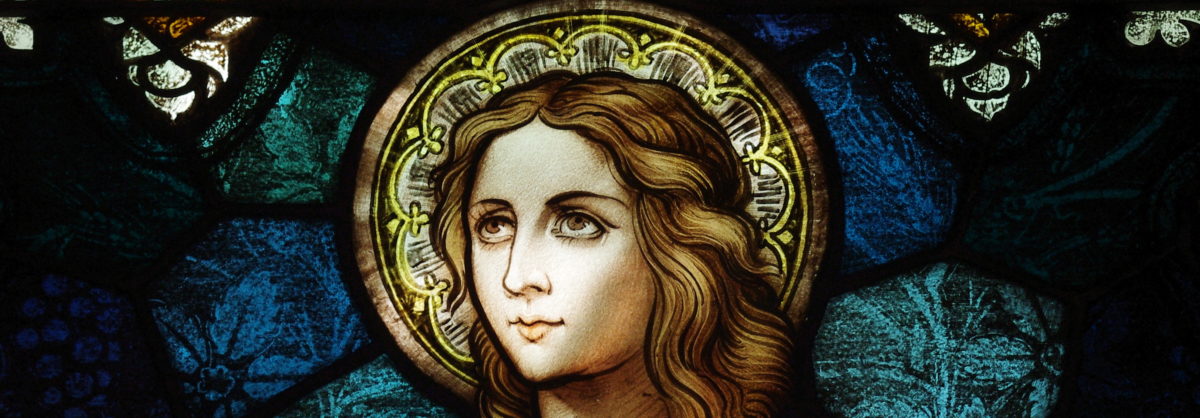Being a committed Christian in the Roman Empire during the first three centuries of the Church meant you were willing to be radically countercultural — even if doing so resulted in death. In fact, this time period is often referred to as the Era of the Martyrs.
As worshippers of pagan gods, the Romans often refused to permit Christians to profess their faith openly. However, if Christians agreed to make public sacrifices to the Roman gods, emperors would turn a blind eye to what went on behind closed doors.
Many Christians refused to engage in this duplicity. But if they rejected social norms, they dishonored the emperor; thus the harshest punishments were reserved for them.
The Great Persecution, which lasted from 303-311 AD, was the last and most severe of all the Roman persecutions. Thousands of Christians were killed under the wrath of Emperor Diocletian. Many were burned alive, including the virgin and martyr St. Agnes.
Though little is known about St. Agnes’s life, she is one of the earliest women to be honored by the Church as a saint.
According to tradition, Agnes lived in Rome around the turn of the fourth century. Some claim she was born into a Christian family, while other sources maintain that she was Roman nobility — the only Christian among her pagan family members.
What is known is that Agnes was martyred, likely around the age of 12 or 13, asserting that she longed only to be the bride of Christ. Fittingly, her name in Greek means “pure.” Her name also became associated with the Latin word agnus, which means “lamb.” Thus, she is often depicted holding a lamb, a symbol of purity and of Christ, the Paschal Lamb.
In many ways, we too are living in a culture not unlike that of St. Agnes’s time. The gods we are asked to publicly worship are not Roman gods, but the gods of wealth, power, lust, success, fame, technology… anything that will bring us status, control, and comfort.
In our society, suffering for the sake of high ideals is demonized, something to be avoided at all costs. Amidst hedonism, the cross is gravely misunderstood and ultimately rejected. Since the choice to follow Christ is radically different, it often makes others uncomfortable. Although we don’t risk our lives when we decide to go against the grain, we do face persecution in various forms.
Like Agnes and the Christians of the early Church, St. Elizabeth Ann Seton was unafraid to live counterculturally and embrace the Paschal Mystery. Life, she knew, entails suffering and death, but because of Christ’s cross, the glory of the Resurrection is also promised.
Mother Seton wrote that we “receive [Our Lord] by the communion of the cross. In receiving his cross we are not to look at what it is made of, that is on the nature of our sufferings, it being a mystery. We are to look only at the interior virtue, not the exterior form . . . the form of its afflictions carries eternal consolations. When our Savior offers us his cross in any way, it is Himself.”
Despite bearing many crosses — sickness, death of loved ones, ridicule from family members for her conversion to Catholicism, poverty — Elizabeth consistently chose to transfigure her suffering into opportunities to encounter the Lord.
I can’t help but think that the despair we’ve felt during the pandemic has been due in part to our having forgotten, or perhaps never learned, how to embrace and live the Paschal Mystery as Sts. Agnes and Elizabeth Ann Seton did. Each of us bears crosses. Some are visible, many are not, and some are more burdensome and heavier than others.
The truth is, we will probably experience other hard times. Perhaps some of us have already lived through periods that were more difficult than these past years. God doesn’t promise a life without suffering, but he does promise that when we turn to Him, He will help bear the cross, lighten our yoke, and give us rest. We cannot have the glory of the resurrection without the pain of the cross; we cannot have eternal life without first dying to self. It is the great paradox of our faith.
CAITLIN SICA received her MA in Theology from the University of Notre Dame. You can read more of her writing at www.caitlinsica.com.
This reflection was previously published. Click here to view all the Seton Reflections.
Image: Saint Joseph’s Catholic Church (Central City, Kentucky) – stained glass, St. Agnes
